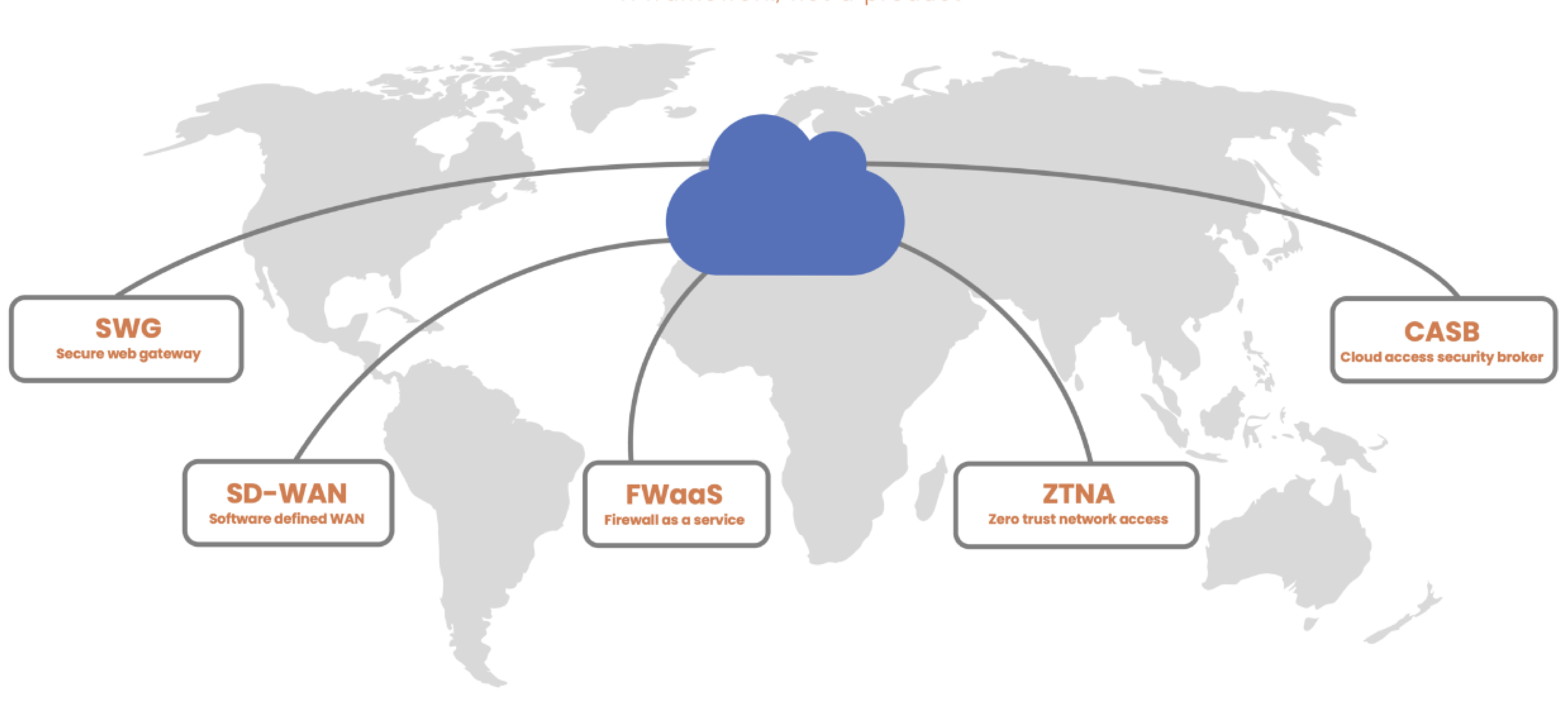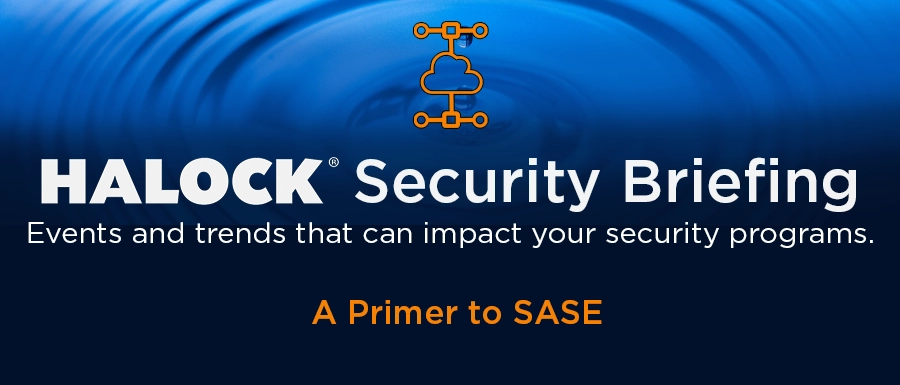SASE: What is it?
A common problem across all organizations is the consistent enforcement of security controls and technologies for their employees that are located remotely as well as in the office. Oftentimes, different or duplicate security solutions need to be deployed and managed to achieve complete protection and visibility. To address this, security providers have developed Security Access Service Edge (SASE solutions to provide a holistic approach to data security and compliance. SASE (pronounced “sassy”) solutions are cloud-centric and provide users
with a centralized way to connect to all the organizations applications and data regardless of where the user may be located. Think of it as a Cloud-based Next Generation Firewall.
Using this approach SASE solution providers enable a variety of centralized security and compliance services, that may include identity and access management, data loss prevention (DLP), cloud access security brokers (CASB), and threat detection and response. Having this type of architecture allows organizations to consolidate their security tools and services into a single, unified platform.
The “How” and “Why” of SASE?
SASE, which refers to the framework as opposed to one specific product, “delivers converged network and security as a service” capabilities that may include several security functions. SASE supports branch office, remote worker and on-premises secure access use cases. SASE is primarily delivered as a service and enables zero trust access based on the identity of the device or entity, combined with real-time context and security and compliance policies.” as defined by Gartner.

Traditional enterprise hub-and-spoke network security connects offices via private networks and routes traffic through secure web gateways and firewalls, focusing on the data center. This approach does not replace the in place network infrastructure and data centers but simply enables your users to access them using a centralized access portal. Think of SASE as VPN in the cloud that is secured by a next generation firewall.
Today’s workflows, traffic patterns, and use cases are much different today than when hub-and-spoke networks were conceived. That’s because:
- More user traffic is heading to cloud services than data centers
- More work is performed off the network than on it
- More workloads are running in cloud services than data centers
- More SaaS applications are in use than those hosted locally
- More sensitive data is housed in cloud services than inside the enterprise network
The need for secure access has grown from on-site networks to basically anywhere and everywhere.
Benefits of a SASE
Here are the benefits of a SASE approach:
Centralized Security
With a SASE’s ability to consolidate numerous networking and security functions that would traditionally be delivered in siloed point solutions, it can reduce an organization’s overall cost and complexity while enabling more secure remote and mobile access. This can increase security staff effectiveness by having centralized management and orchestration of consistent policies across the network.
Enhanced Security
A SASE also allows your security team to restrict access based on user and application identity, as well as by device, that can be scaled to demand, by utilizing Zero Trust Network Access (ZTNA). ZTNA as defined by Gartner is, “a product or service that creates an identity- and context-based, logical access boundary around an application or set of applications. The applications are hidden from discovery, and access is restricted via a trust broker to a set of named entities. This removes application assets from public visibility and significantly reduces
the surface area for attack.”
Scalability
SASE capabilities are managed by the provider of the service. This means that typical concerns such as available network throughput and the capacities of the next generation firewall capabilities automatically scale to the demand. No need to buy higher capacity hardware or procure larger bandwidth capabilities.
Challenges of SASE
Gartner recently published market research on the single-vendor SASE, the Market Guide for Single-Vendor SASE (available for download here) which states that “The market for well-architected single-vendor SASE offerings is immature but developing quickly. Multiple providers now have a single-vendor SASE offering; but few offer the required breadth and depth of functionality with integration across all components, a single management plane, and unified data model and data lake.”
Due to the nature of how a SASE solution is delivered, a consumer of SASE is limited to the security solutions and capabilities of the SASE provider. Because no single vendor stands out as “best in breed” in all SASE capabilities, it is important for your organization to identify its functionality requirements and compare SASE offerings such as unified management planes and unified security planes with a single data lake.
Another consideration is flexibility to move off the SASE solution. Due to the reliance on the provider for multiple security solutions. Moving off the provider is more difficult as it may require investment in new security solutions to replace functionality provided by the SASE provider.
Conclusion
The shift over the past decade in site-centric workplaces to remote, cloud-centric workforces has complicated the traditional views on network security. No longer are companies focusing on these on-site, hardware-based networks but are gravitating to a more cloud-centric security network to provide secure access no matter the physical location of company resources.
According to a research report from AT&T, the hybrid work model is expected to grow to 81% by 2024. While the Covid-19 pandemic certainly played a large role in most jobs (8 out of 10 according to the same study) becoming completely remote, as the world settles into its new “normal” workers are focusing more on a stable work-life balance. The need for a flexible work environment ranks high on the priority list, with 97% of respondents saying offering a hybrid work environment will entice new talent and retain employees.
Having a SASE architecture allows companies to grow within hybrid work environments while enforcing centralized security to the ever-expanding remote workforce.
ABOUT THE RESEARCH
This document was created by a human analyst in collaboration with generative AI. The final content was developed, reviewed and edited by a human editor to ensure accuracy, originality, and adherence to applicable legal standards.
SCHEDULE YOUR FULL HALOCK SECURITY BRIEFING

